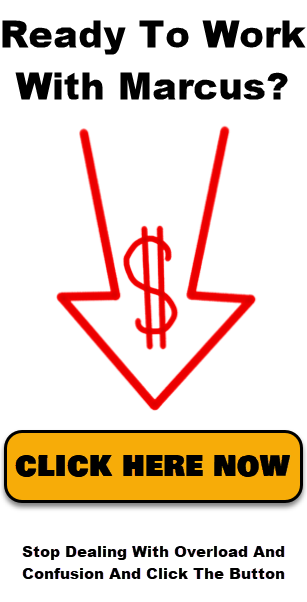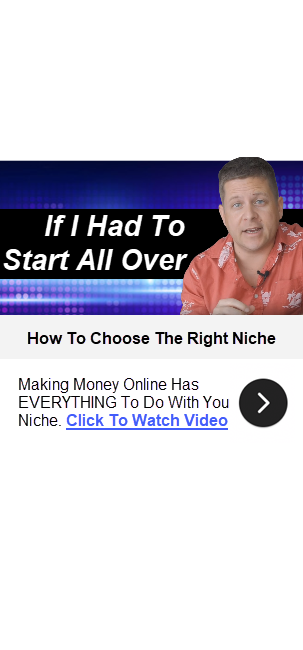Best Affiliate Programs 2019
The Best Affiliate Programs of 2019

If you’re ready to see the top of 2019, the affiliate offers that make the most money, stay tuned. I’m going to show you exactly what offers work the best, which ones make the most money, and results of what’s working, how to find the right offer for your niche, and so much more.
Let’s talk about how to find the right offer.
Part One: What Does Your Traffic Want?
We’re going to start with asking what our traffic wants.
Here’s the thing. I can give you a list of the top offers, and you’ll probably look at it and think, “That’s good, but what the hell do I actually do with them?” So instead, what I’m going to do is teach you how to find the right offer. Because not all offers are equal.
a. What do they click on?
You want to think about what your traffic wants. What is the nature of your market?
Your people might be into weight loss, or they’re looking up forms for taxes, or they’re into budgets, or they’re into spreadsheets, or they’re into smiley faces, or they’re into something else. If you have a blog, you have to look at it and say, “What’s my blog about? What are people clicking on?”
If you’re getting traffic from paid traffic, you have to ask, “What’s going on here?”
The biggest indicator of looking at how you’re going to make money is what your market is already clicking on. This is extremely important. So you want to go through, find other sites in your market, and look at the banner ads that are out there. Look at the ads that people are running. Look at the things that get attention, and the things that get the clicks.
It’s extremely important to do this. If you don’t, it doesn’t matter what offer you run, you’re not going to make any money.
b. What is their ultimate goal?
What do these people want? If they’re looking for “food that causes weight loss”, then you know their goal is to lose weight. If they’re looking for “how do you fit in a bathing suit”, then you know that they want to fit in a bathing suit. Very simple.
If they’re looking for “hardship letters for mortgage”, you know they want to save their house, or get a mortgage modification, or something like that. So we’ve got to look at the ultimate goal of what our visitors are.
When you’re doing this, you can look at goals on your site, and you can look at goals on other sites.
A lot of people think that banner ads and advertising on other sites is dead. And those people don’t know what they’re talking about. I buy banners all the time. I make a living on banners. Banners are still huge. They surpassed newpaper advertising, online advertising, even TV advertising. This stuff isn’t going anywhere. If you think banner ads are dead, if you think paid ads are dead, if you think solo ads are dead, then you don’t really know how to market.
c. What other things are they buying?

What other things are they buying? What other stuff are they buying? If you have people looking at “budget spreadsheets”, are they buying tax software? Are they buying Microsoft Excel? Are they buying templates? Are they buying calculators? What other stuff are they buying?
d. What can we flip them into?
A lot of you guys have heard about me flipping the market. What does this mean? What does it mean to flip the market? Well, what I mean is taking something general or generic, or even something specific.
If you see something specific like “how do I get a hardship letter for my mortgage”, okay, that’s specific. They’re not looking to buy a hardship letter, obviously, because they’re in a hardship, which means they probably don’t want to spend a lot of money.
However, they could be interested in things that will help them. Maybe there’s a foreclosure avoidance program you could send them to. Maybe there’s some kind of government refinance loan that helps them. Maybe there’s some kind of stay-in-your-house program. These kinds of things are very important. Because if you can flip the market, you can make money.
For example, someone looking to calculate the payments of a car loan would probably be interested in looking at getting the best deal on a car, interested in getting the best amount for their trade-in, interested in getting other things that are going to help them. Maybe insurance.
So we have to look at it.
And say we want to take them from the specific and flip them into the stuff that pays us. This will make or break you, no matter what affiliate offer you’re using, because this is the crux that everything hinges on. And it still has to be related to their ultimate goals. We want to flip them into their ultimate goal.
There’s a myth floating around online that you need to have buyer keywords. That if someone is not typing in “apply for mortgage”, then they don’t want a mortgage. That is absolute hogwash.
I can prove that this isn’t true.
There’s something I did about five years ago, on the day after I got out of rehab. I went on my computer, and I wanted to look at my search history. So I pulled open my search history with this question in mind:
Could someone have predicted that I could have been an alcoholic? And the answer is yes. Based on what people search, you can predict what they’re going to need, and what’s going to happen. What they’re going to feel. This is called predictive marketing.
You can actually learn what’s going to happen. You can actually anticipate the idea. It’s also called anticipatory marketing. What they’re going to want. Because if someone knew I needed to go to rehab, they would have made a lot of money.
So you have to look at your market and ask, “Can I predict what people are doing? Can I predict what they’re going to want?” If people are searching for a hardship letter, you can almost predict that a certain percentage of those people are going to end up foreclosing on their homes. It’s like clockwork.
Part Two: Select an Offer Based on Your Market Needs
Now, we’re going to look at three different types of offers. The first one is what I call a “direct hit”. Then we have “pretty damn close”, and “gonna take some work”. You want to go through and categorize these.
a. Direct hit

The first one is what I call a direct hit. A direct hit offer is something that’s usually free, with no barrier of entry. Something that’s exactly what the person wants. You want to get as close to a direct hit as possible. It’s going to be directly in line with someone’s needs.
b. Pretty damn close
This is where you find something and you could probably make it work.
c. Gonna take some work
If you try to go with one of these offers, make sure you really know how to sell. Because if you don’t, it’s really going to be an uphill battle.
Part Three: Look at the Offer Payout
When you’re checking out these offers, you want to look at the offer payout, and look what it does.
a. What will you make per click?
You want to look at what’s called the EPC, which is the earnings per click. What are you making per click? If you convert one out of 100 people on a big offer like something with a mortgage, you might be making $1 per click. If you convert one out of 100 on something small, like an astrology offer, you might only make 2 cents a click.
Some affiliate networks will actually show you EPCs. They have what’s called a network EPC, which is like the average of all the people on the network running this offer.
b. What has to happen for me to get paid?

This is important. What has to happen? For some offers, it might be something really simple. Maybe someone only has to download something. For example, if you’re doing an offer with a toolbar, maybe the user only has to click download and install a toolbar, and maybe you’ll make around $2 for it. Easy.
Now on something more complicated, like a refinance kind of offer, it make take more for you to get paid. For instance, it might be a three-page submit, where a user has to fill out three pages of information and then submit it. That would be asking a lot more from the customer, so it might be harder to achieve.
The lower the barrier of entry, the better you’re going to do.
If all you have to do is get someone to put their email in, that’s hopefully pretty easy. You could probably get $50 percent of the people who see your offer to put their email in a box. If you have to get a name, email, and zip code, maybe you’ll only get 30 percent. If you need a name, email, zip code, and phone number, maybe you’re looking at 10 percent.
And if you have to get someone to whip out a credit card and buy something, you might have a 1, 2, or 3 percent chance
.
c. Are there any reversals, refunds, or clawbacks?
Are there any reversals, refunds, or clawbacks? For example, if you’re promoting something like ClickFunnels, that might be something that pays 38 bucks per month, per user, and it has a free trial. Now, you don’t get paid anything on the free trial, which kind of sucks. You get paid on their monthly prescription, but there are reversals, refunds, and clawbacks.
So you can give someone the offer, and then they refund, and you don’t get paid.
These are things you want to know. Because if your butt is on the line and you’re paying for traffic, you need to know if something is going to get a lot of refunds, or if it’s something that’s going to work, or if it’s going to take a lot of people to sell, or whatever else may be going on.
Part Four: Offer Landing Page
This is one that people miss. I’m a stickler for a landing page. I’m obsessed with the landing page.
a. Will this convert?
Is the landing page going to convert? If it doesn’t convert, it doesn’t matter about the payout, it doesn’t matter how many people are making money with it. What you care about is if it’s going to convert. So you have to look at the landing page and see for yourself. And will it convert with your traffic? It doesn’t matter how well it does for other people, because your traffic is different.
b. How many steps to get to the CPA?
Or you can think of this a different way. How many steps to get you paid? What are you going to get paid? There could be something with just one step to get you paid, or it could be something with multiple steps. You want as few steps as possible that the user has to complete, in order for you to get paid.
c. Are there any distractions / phone number / links out / ads?
This is very important. When you’re doing Clickbank, or you’re doing some offer networks, you have to be careful. Because there might be other distractions, like other ads on the site that you don’t get paid for. If I find that, then I’m not going to promote that offer. I’m not going to give them my traffic. They can make money with their other ads. Is there a phone number for people to call, maybe for people to order something? And I don’t get paid when they call? Screw that. You’re just screwing me out of my commission. That’s not going to work.
You want a one-track thing. You want something straight up, something that’s going to get you paid. Something that’s direct.
d. Does the page collect leads before I get paid?
This is a big one. Are they scraping leads before you get paid? Like if you go to a page, and you’re paid on a sale, and they’re collecting emails before the sale, that could be bad. You don’t want to build your list for free. What would you want to do that for?
So you have to look at that. Now, if they pay you to give them leads, then sure, of course you can do that. But if there are things you’re not getting paid for, I’m not going to promote their stuff. I don’t care how good it is.
e. Does the landing page fit something my market wants?
Does the landing page have something really good. Check and see if there’s some kind of hot button you can use that your market will really like.
Part Five: Direct Offers / Offer Networks / CPA Networks

Now we’re looking at the type of offers you can get, what they are and how you use them.
a. Going direct
Going direct means that you’re promoting a direct offer. For example, something like ClickFunnels would be a direct offer, or web hosting. If you promote something from Tony Robbins, you would promote his stuff through his direct offer.
Any time you go to Google and find a specific affiliate program, that would be full of direct offers. When going direct, you usually have to sell something.
b. Major affiliate networks (CJ, Clickbank, JVZoo, Linkshare)
Then you might find offers through major affiliate networks, also known as offer networks.
Some examples of these are Commission Junction, Linkshare, Clickbank, and JV Zoo. These are all offer networks that have lots of offers. Most of them have offers that are put by separate people. For example, if I go to Linkshare and I want to put my offer on there, it’s actually me running the offer on Linkshare, and then Linkshare shares the profit with you.
Clickbank is primarily going to focus on people buying something to get paid. Commission Junction sometimes has CPA stuff, but there not a CPA network. With JV Zoo, 9 times out of 10 you have to get someone to buy something. See how it works?
d. CPA Networks (Maxbounty, Globalwide, Aragon, Peerfly)
Then, you have CPA affiliate offers. CPA is cost per action. These are things like Maxbounty, Peerfly, Global Wide, Aragon. There are several different ones.
CPA networks are going to have offers like pay-per-lead, pay-per-call, pay-per-download, and things like that. You’re getting paid per action, and that actually isn’t always a sale. That means you don’t always have to make a sale in order to get paid.
Part Six: Marcus’s Favorite Offers
Now, let’s dive into my favorite types of offers. These are the ones I love the most.
a. Browser extensions
You guys all know these are my favorite. They work in any market, with any kind of traffic usually, and you can make a ton of money with them. There may be offers like maps, browsers, or local news.
With these kinds of offers, may sure that they’re legit. Download them yourself and make sure they’re good. Some networks have ones that are shady. You want to watch out for those.
Make sure the ones you’re promoting are good. You can actually go to the Google Chrome store and look them up, and see if people are complaining about them or if they like them. If they complain about them, don’t promote them. If they’re bad, don’t promote them. I actually have a computer where I download all of my browser extension offers, and I test them myself before I promote them.
b. As seen on TV
My second favorite type of offer is as-seen-on-TV. I like these because the people know how to sell. If you have someone out there spending a lot of money to put out an as-seen-on-tv product, you know that the thing is going to sell to a broad audience, and you know that people did the work to sell.
These people are masters at sales. You know the landing page is going to convert.
c. Fiverr
Fiverr is also really good. They have a great affiliate program. They pay on a bid, so for example, if someone pays $5, I might make $100 or more, depending on what I sell. I’ve made some money with Fiverr, I just haven’t promoted it as much as I should. Pure laziness. But it is a good one, for sure.
d. Loans / credit cards

Loans and credit cards are always going to be good. With some credit cards you can get paid around $100 for an application. They’re very simple, very easy, and they always work.
e. Software-as-a-service
Software-as-a-service is also good. Now when I promote this, I don’t promote directly. I want to build a mailing list.
f. Web hosting
This is just what it sounds like.
g. Financing and investing
These are really good. When you’re promoting these kinds of offers, you should never do direct linking. Just don’t do it. And also don’t used trademarked stuff.
h. Free credit score
People make a fortune with free credit score offers. They can easily make seven figures doing this. This is a big.
i. Email / zip offers
Next is email and zip submit offers. These are good, too. If you do an email submit, again, make sure that it’s legitimate. Because there’s a lot of crap out there. So make sure that it’s absolutely legitimate.
You might get something like $1.50 every time someone puts an email in a box. You don’t always have to get a signup, you don’t need to get someone a credit card, people just put their email in a box, and you get paid. And there are tons of these kinds of offers.
j. Diets
Diets are never going out of style.
k. Dating
Dating is always going to make money.
l. High-paying trials
These are good. For example, I might make $100 when someone tries out web hosting, or tries out a product. Sometimes this will overlap with as-seen-on-tv as well, which is cool.
Part Seven: Supplemental Offers
Now I have what we call supplemental offers. A primary offer is the one that you plan on making the most money with. It might be the reason why you made a site.
A supplemental offer is something you can use to supplement for the people who don’t want to buy that other stuff. There are multiple ways you could go about doing this.
a. Amazon
One place you could look for supplemental offers is Amazon. This is a great place for these kinds of offers. You would use the Amazon Associates program for this.
b. AdSense
AdSense is also great for supplemental offers. You may want your site to have more direct ads that you’re in control of, but you could also run AdSense to make even more money.
c. Big stores
This might be Best Buy or something like that. You can promote offers from big stores as supplemental offers as well.
To learn more, go to www.AffiliateMarketingDude.com.

